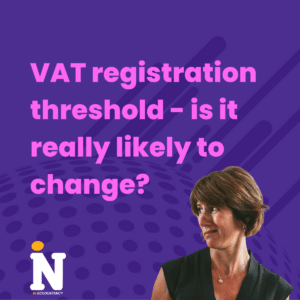There has been much interest recently in Cycle to Work schemes, particularly since HMRC lifted the limit on the value of bikes and accessories which can be claimed from £1000 to, well basically to whatever your employer agrees to, from June 2019.
However, operating a scheme is not quite as simple as one might think at first glance. There are still many rules to be followed and in particular the lifting of the £1000 limit raises a new issue for employers to be aware of.
The biggest one of these, which is often overlooked, is the requirement of FCA Authorisation for any loans to employees of, meaning that if you are an employer you may wish to, indeed have to, retain the £1000 limit to your scheme.
What are the details and how much tax can be saved?
A Cycle to Work scheme generally operates where an employee agrees to give up part of their pre-tax salary in exchange for a benefit from their employer, in this case the hire of a cycle for active travel and/or safety equipment.
In order for a Cycle to Work scheme to be compliant, the following conditions must be met:
- An employee must not at any point during the hire period own the cycle
- At least 50% of the cycles use must be for qualifying journey’s, i.e. commuting to work purposes
- The offer of the use of hired cycles must be made available across the whole workforce, with no groups of employees being excluded.
If a scheme meets the relevant criteria, it can benefit from a tax exemption that will benefit both the employer and the employee. For tax and national insurance purposes there is no limit on the value of the cycle and safety equipment you can provide to an employee.
Table 1: Example of Basic Rate Taxpayer Employee Saving at 32% (20% Income Tax and 12% NIC) over a two-year term
| Examples of Hire Value | Year 1 | Year 2 | Total |
| £500 | £80 | £80 | £160 |
| £750 | £120 | £120 | £240 |
| £1,000 | £160 | £160 | £320 |
Table 2: Example of Higher Rate Taxpayer Employee Saving at 42% (40% Income Tax and 2% NIC) over a two-year term
| Examples of Hire Value | Year 1 | Year 2 | Total |
| £500 | £105 | £105 | £210 |
| £750 | £157.50 | £157.50 | £315 |
| £1,000 | £210 | £210 | £420 |
Table 3: Example of how much can be saved by Employers
| Examples of Hire Value | Employers’ NIC Saving (13.8%) |
| £500 | £69 |
| £750 | £103.50 |
| £1,000 | £138 |
Any employer of any size across the public, private and voluntary sectors can run a Cycle to Work scheme. The scheme does not include people who are self-employed. The Cycle to Work scheme includes cycles for active travel, and also cyclist safety equipment. Where a cycle and/or safety equipment is made available to an employee under a salary sacrifice arrangement, there will be a consumer hire agreement in place which will typically be between the employee and employer, or it can be with a third party such as a scheme provider.
The owner of the cycle (the employer) under the consumer hire agreement, may need financial conduct authority authorisation.
There is an exemption from needing authorisation where the owner is the employer and the total value of the goods being hired does not exceed £1,000. The agreement must be under a relevant employee benefits scheme. This exemption does not apply if the total value of the goods hired under the agreement exceeds £1,000.
Cycle to Work schemes generally run for 12-18 months. The amount paid to hire the cycle is set at the employer’s discretion, as is the time over which the cycle is hired. There must be no option, whether expressed or implied, as part of or alongside the initial hire agreement for the employee to purchase the cycle or equipment at the end of the hire agreement. If there is, this is likely to make it a hire purchase agreement rather than a hire agreement, where different regulatory requirements apply, and it would be no longer eligible for the tax exemption.
At the end of the hire period an employee has 3 options.
Option 1, Extend the hire agreement,
Option 2, Return the cycle and equipment,
Option 3, buy the cycle and equipment under a separate agreement entered into at the time.
To value the cycle at the scheme end, HMRC have produced the below table for acceptable disposal values as a percentage of the original price.
| Age of Cycle | Acceptable disposal value as a percentage of original price (including VAT) | Acceptable disposal value as a percentage of original price (including VAT) |
| Original price of the cycle less than £500 | Original price of the cycle £500+ | |
| 1 year | 18% | 25% |
| 18 months | 16% | 21% |
| 2 years | 13% | 17% |
| 3 years | 8% | 12% |
| 4 years | 3% | 7% |
| 5 years | Negligible | 2% |
| 6 years and over | Negligible | Negligible |
At the end of the hire agreement if you give your employee the cycle without them paying for it then this is a taxable benefit in kind and should be reported on form P11D. Alternatively, you may wish to allow your employee to keep using the cycle and equipment after the initial hire period is ended without transferring ownership by extending the duration of the hire agreement or by entering into a new hire agreement.
Capital Allowances
If the employer purchases the cycle and cyclist safety equipment out right to hire out to their employees, this will be capital expenditure, and they can claim capital allowances in the normal manner. For many businesses, expenditure on cycles and cyclist safety equipment will qualify for the annual investment allowance.
Where the annual investment allowance is not available, expenditure on cycles and cyclist safety equipment can be added to the main capital allowances pool and qualify for writing down allowances at 18% per annum. If the cycle is leased, the leasing cost will be deductible against profits.
At the end of the agreement, where capital allowances have been claimed on the original capital expenditure, any sums received through the sale of the cycle or cyclist safety equipment, must be brought into account as disposal proceeds and the main capital allowances pool.
VAT
When you purchase or hire equipment, VAT will be charged on the cost but not for cycle helmets which is zero rated.
If you do not use salary sacrifice arrangements this is input tax and is subject to the usual rules on VAT recovery.
If you use a salary sacrifice arrangement and this is still input tax but the salary sacrifice constitutes consideration for the equipment, and hence output tax will be due on the amount of salary foregone.
For further advice on how to implement a Cycle to Work scheme please contact the department for transportation at general-enquiries@forms.dft.gov.uk







